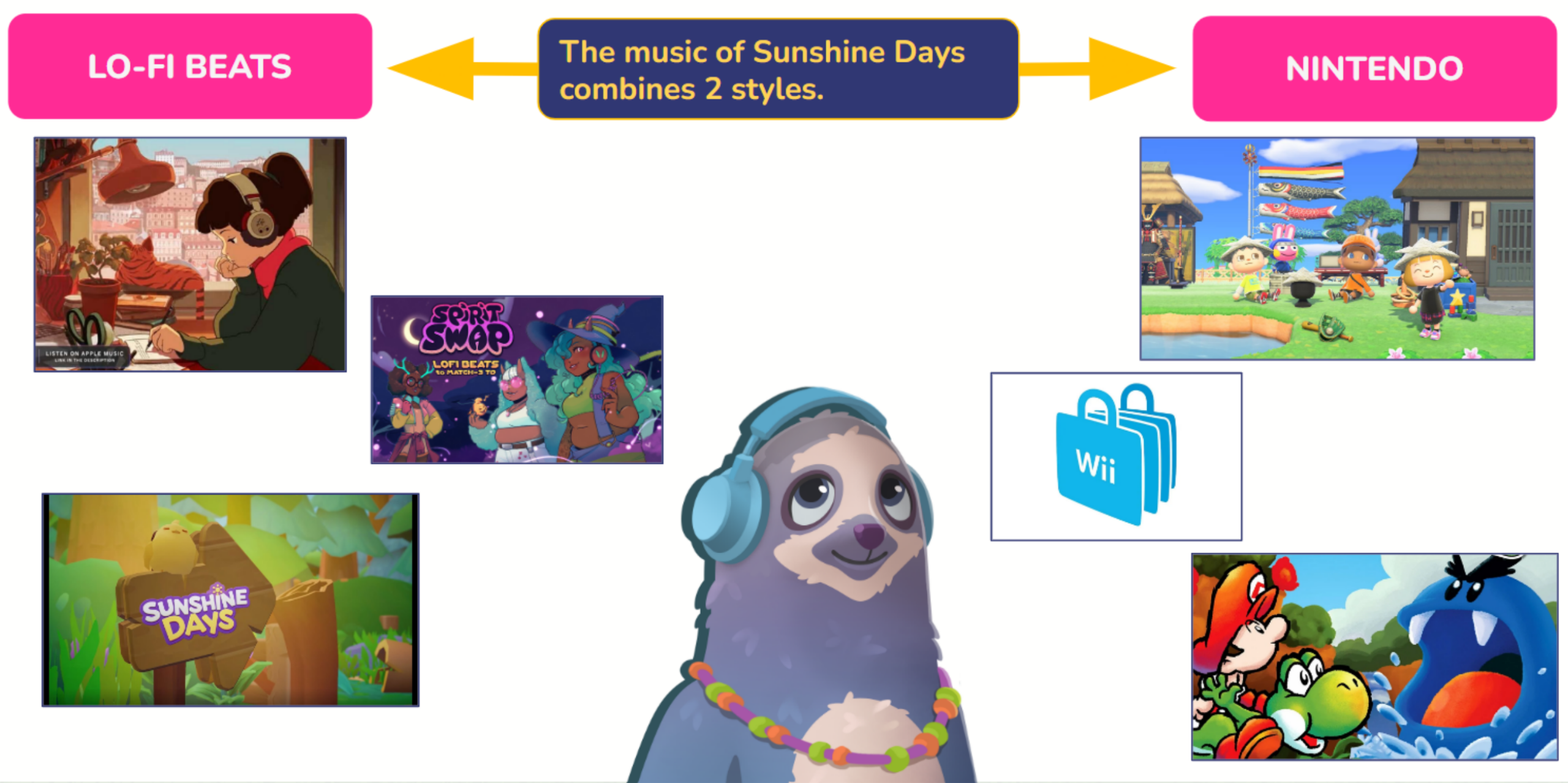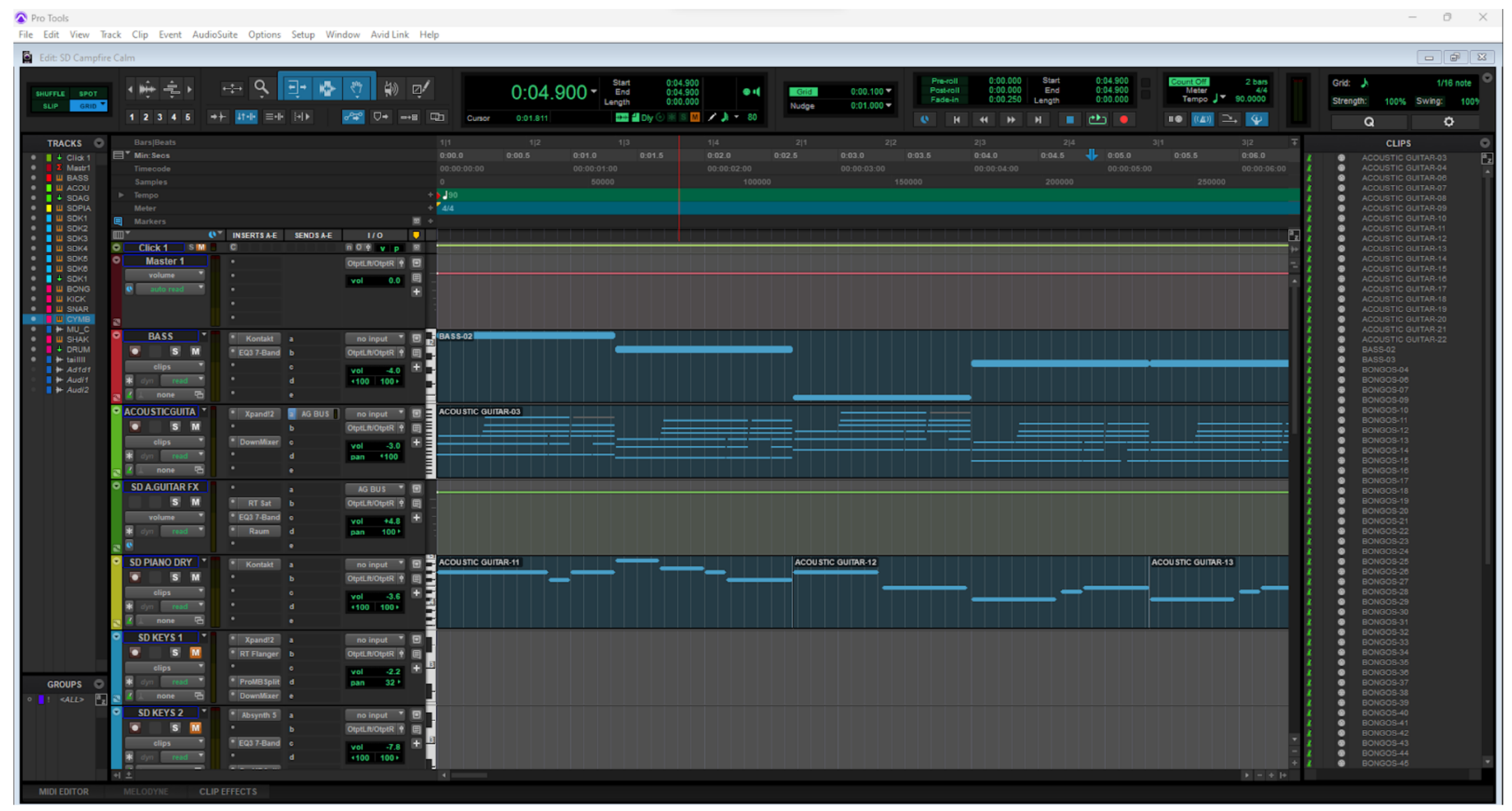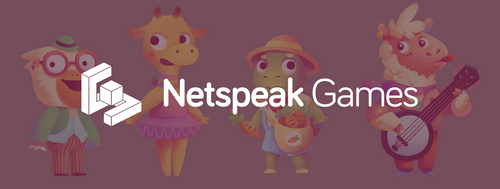How We Made: Sunshine Days Soundtrack - Part One
Krystal Gemma

Welcome to the first of our two-part series in how we made the Sunshine Days soundtrack. We caught up with Audio Engineer, Rob, to take us on the journey from ideation to launch.
🎵 Rob, how did you approach making the soundtrack for Sunshine Valley?
When it comes to making any OST (original soundtrack), it’s important to not to rush in and make sure you give it a lot of thought! Research and development of your ideas can save so much time moving forward.
📖First, I think about story, and try to understand the core of our game’s story in a short description. For us it is this:
“Welcome to Sunshine Days, a game where you build your own little paradise. You’ll befriend other players as well as the animals who call the Valley home as you craft furniture, harvest crops, and explore the valley. Design a home, make friends, and create a community.”
Based on our game’s story we can immediately focus our OST on being wholesome, relaxing and inviting. As a composer I can now imagine the emotions attached to being in such a comforting space that we can call home, or even call paradise. ✨
I then take a deeper look at emotions. Locking down the emotions we want our players to feel means we can immediately begin writing phrases that express them.
We want Sunshine Days players to feel:
💛 HOPEFUL 💜 RELAXED 💚 COMFORTED 💙 EXPRESSIVE ❤️ JOYFUL 🧡 DELIGHTED
If we are not hitting these notes with our chord and melody choices, we are going in the wrong direction.
Understanding your** target audience** can give immediate insight into what they might enjoy listening to. We aim to give the Villagers what they love!
To summarise a part of our target audience is:
- 18-35+ year old women
- Progressive people who appreciate diversity and inclusion
- Creative, with an appreciation for well designed products
- Interested in creative hobbies, self-care and wellbeing
- Enjoy connecting socially online
- Like to show their individuality visually, either online or in person
- Aware of trends and mainstream culture, but consider it important to define their own tastes and voice
Based on user research, and talking to our team (over half our team fall in this demographic!), we concluded that lo-fi beats as a genre would perform well. Listening to a channel like Lo Fi beats to study to is a great place to get inspiration from.
We can also see the types of games our audience like to play, which serves as a great pool of inspiration. This means I can listen to games like Animal Crossing, The Sims, Stardew Valley, and countless others.
🌟 I then take a look at our design pillars. Understanding design pillars can hugely influence the music one chooses to compose.
- Made by You Does the music make the main character feel vital and important? The music must support the player and not dominate the experience.
- Building Bonds Does the music let us feel connected to strangers? Music must be a shared emotional experience.
- Relaxing and Delightful Does the music add delight to my day? Does the music make me feel relaxed? Does the music encourage mindfulness and calm?
- Grounded in Hope What does hope sound like? Music could benefit from a tiny hint of melancholy. We don’t want it sound too twee!
With and understanding of story, emotion and who our target audience is and our design pillars, we can now start shaping the specific tone of the music.
- We want the music to be relaxing and wholesome.
- It should support and highlight the emotion of the players’ experiences.
- It should be influenced by the Lo-Fi Beats genre.
- We want the music to sound melodic and joyful, with hints of melancholy to ground the experience and create dynamics.
- Overall this is a fun game, so the music should be fun and playful.
- We want the music to have the polish of games of a similar genre, especially Nintendo games.
We’re nearly there now!
The last part of the concepting phase is to take a detailed look at references and see if we can glean some useful stuff. Based on our research I want to see what happens when we combine Lo-Fi Beats with Nintendo polish!

It’s important to work out not just what we want to use, but also what we don’t want to use.
💖 With lo-fi beats for example; major seventh chords, and swinging 12/8 time signature and vintage keyboards, along with cool compression and saturation effects would be good things to incorporate into new music, whereas overly repetitive or busy melodies that sound to much like a jam would be things to avoid. There are also other little learns, for example 'record crackly' is prominent on this type of music, but through phone speakers it would sound too noisy!
🍄 With Nintendo music, we can learn from their simplicity and clarity, and also the extremely joyful nature of most of their soundtracks. However for our purposes we want to avoid it being too polished. We also want the music to sound really chill and cool, so we want to move away from anything that sounds too quirky.

Following this research the very rough rules I follow are:
- Tracks revolve around the root of E, with the chords usually being either E Major 7th, or E Major. In fact, picking out the ascending arpeggio of E Major 7th is what I decided the Sunshine Days theme or leitmotif should be!
- Bass notes will often be quite long, and move only to inject character.
- Beats will usually be to a 12|8 time signature, giving them a natural swing, whilst moving parts move to more of a 4|4 frame, giving them that lo-fi beats flavour.
- Melodies will be simple, but span at least two octaves where possible. This makes them more fun!
- As part of my instrument template, I will use 3 vintage synths that will give a lo-fi warmness to all tracks.
- I will use acoustic guitar to either support synth chords, or entirely replace them depending on the track.
- I will also use a gorgeous piano sound for most of the main melodies as they cut through the lo-fi noise of the chords really effectively.
- Drums have a dead sound with a clap replacing a typical snare. This gives it more of a lo-fi beats flare.
The nature of writing a whole OST (42 tracks at the time of writing!) means that we might need to step outside these guides every now and then, but if we hit a lot of these points the OST should sound cohesive.

🎵 Now I have a plan, I can finally start jamming out some tunes! 🎵
Tune in later this week for Part 2 of 'How We Made: Sunshine Days Soundtrack' and more.

